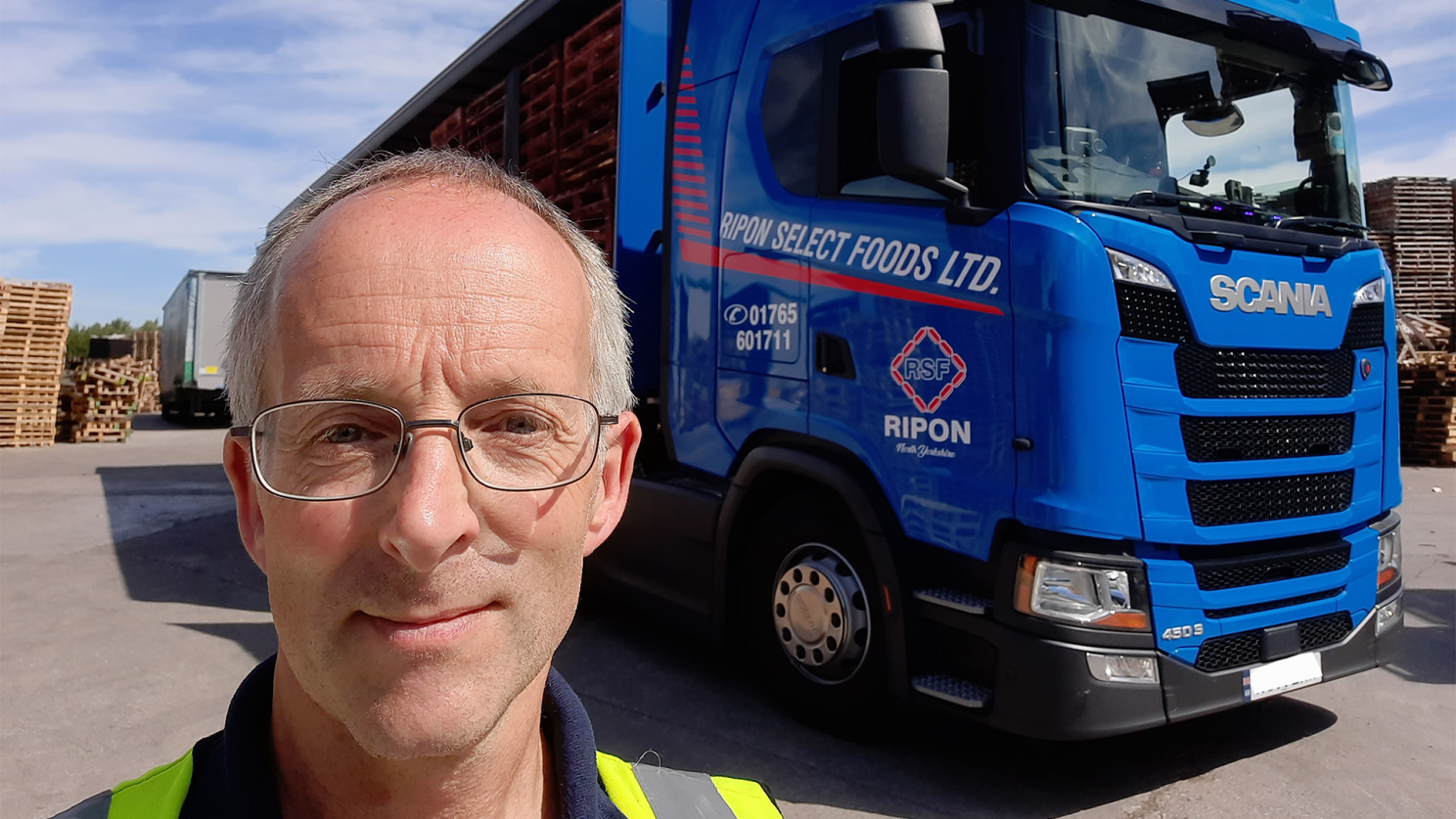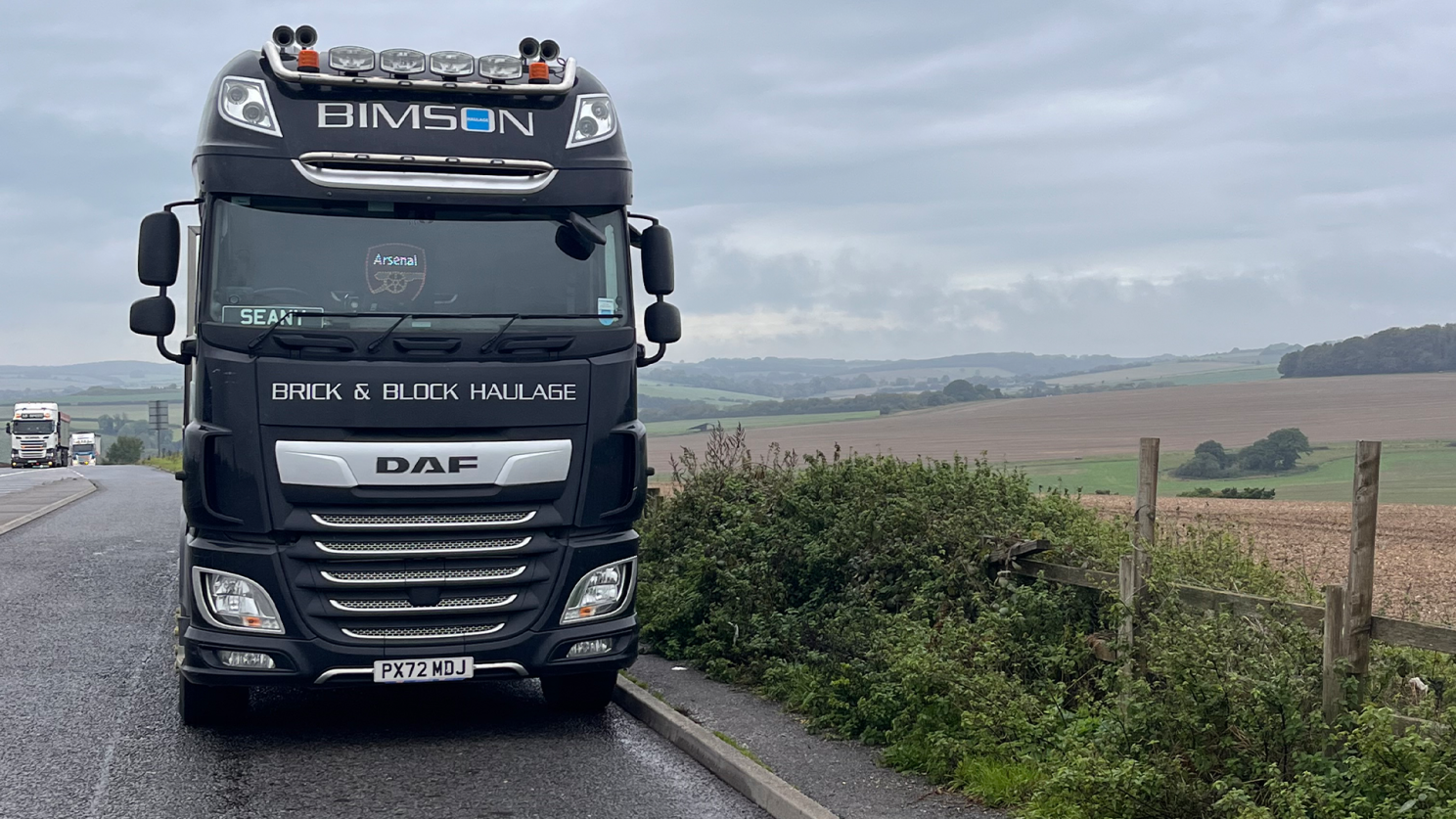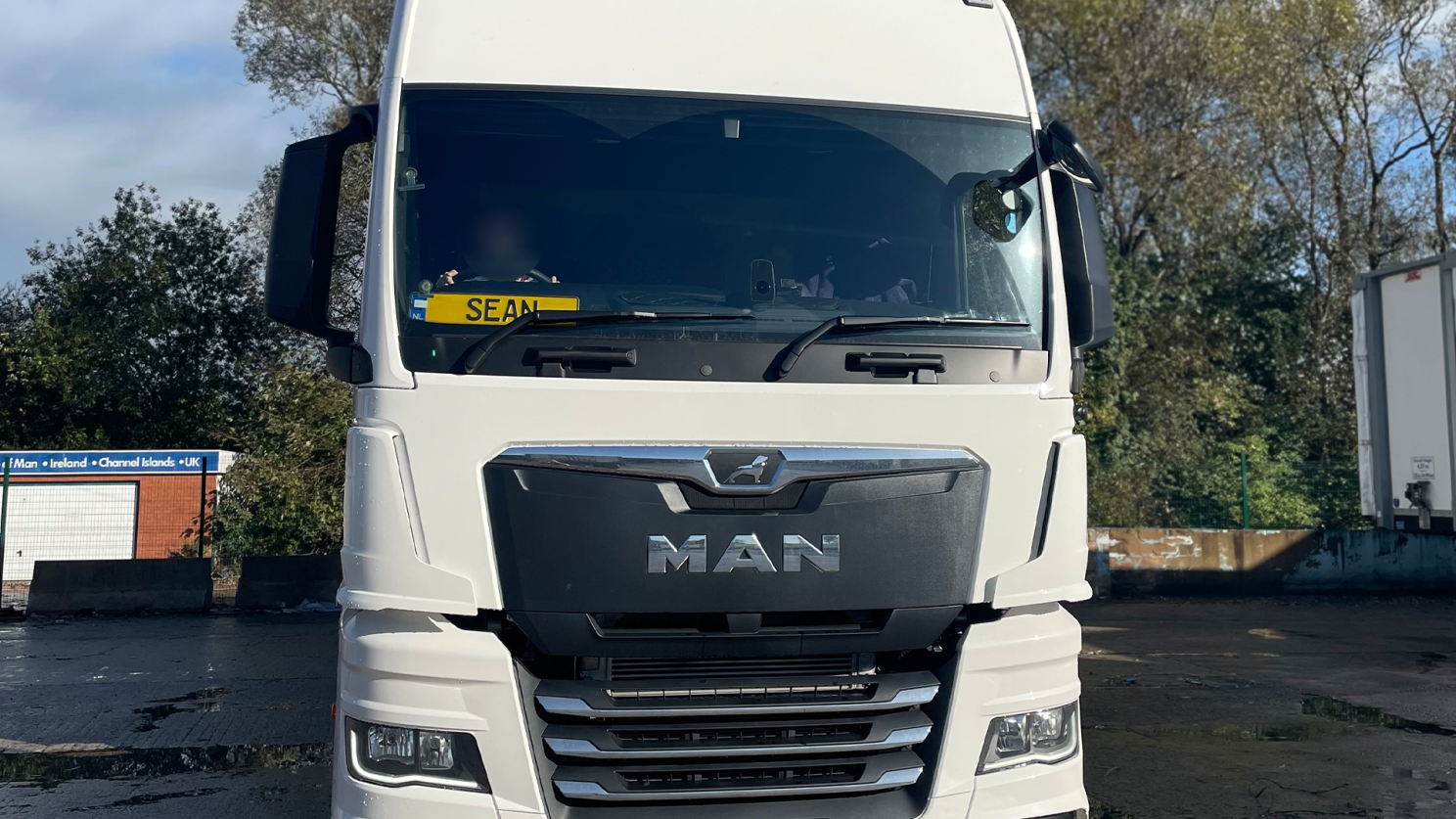
Susie Jones
Opowieści kierowcy ciężarówki: historie z otwartej drogi
Utworzony: 22.08.2024
•
Aktualizacja: 22.08.2024
Chcemy rzucić światło na społeczność kierowców ciężarówek i poznać ludzi za kierownicą.
Od helikopterów lądujących przed ciężarówkami po samochody jadące niewłaściwą stroną autostrady - dowiedz się więcej o kierowcach dostarczających Twoje towary.
Alan
Alan jest kierowcą od 23 lat i zdecydował się dołączyć do branży po wysłuchaniu piosenek Ally Thomson o jeździe ciężarówką. Zapytany o to, co najbardziej kocha w tej pracy, odpowiada, że "samotność, jaką daje jazda ciężarówką - całkowite oddzielenie od życia domowego".
Ciężarówki Volvo są jego ulubionymi, ponieważ podróżuje po Wielkiej Brytanii, przewożąc towary Amazon. Mówi, że przewoził wiele interesujących produktów, "wybór jest nieograniczony - wystarczy pomyśleć o wszystkim, co sprzedaje Amazon".
Dla kierowców parkujących na noc, zapewnienie sobie rozrywki podczas przestoju jest trudne. Jednak doświadczeni kierowcy, tacy jak Alan, mają swoją wieczorną rutynę. Stwierdził, że "lubi oglądać telewizję Sky na iPadzie", gdy jest zaparkowany na noc.

Dla kierowców walczących o rozrywkę za kierownicą zebraliśmy listę sposobów zapobiegania nudzie.
Podczas gdy długie godziny w trasie mogą wydawać się monotonne dla wielu, Alan wyjaśnia, że zawsze jest coś, co trzyma go w napięciu.
"Myślę, że najbardziej szaloną rzeczą, jaką widziałem podczas jazdy, jest helikopter lądujący tuż przede mną", wyjaśnia - co jest dalekie od monotonnej reputacji, która spowija branżę od dziesięcioleci.
Mając za sobą 23 lata w tej branży, Alan oferuje kilka porad, które pozwolą zachować świeży wygląd zębów podczas podróży.
Jak wyjaśnia, "rada, której udzieliłbym każdemu nowicjuszowi w branży, to zawsze pamiętać o ładowaniu szczoteczki do zębów".
Richard
36 lat temu Richard rozpoczął swoją karierę w branży transportowej i nigdy nie oglądał się za siebie. Złapał bakcyla jazdy, gdy dołączył do swoich dwóch starszych braci, aby pomóc w dostarczaniu towarów w całej Wielkiej Brytanii.
"Uwielbiam brać ładunek i ruszać w drogę. Sam decyduję, kiedy mam przerwę i gdzie parkuję. Bycie w trasie i podróżowanie po całej Wielkiej Brytanii jest świetne" - wyjaśnia.
W trakcie swojej kariery życie w trasie zaprowadziło go do Mediolanu we Włoszech - to wyczerpująca podróż nawet dla najbardziej doświadczonych kierowców. Zapytany o to, jak zapewnia sobie rozrywkę podczas podróży, odpowiada: "Lubię słuchać muzyki i oglądać filmy w czasie przestojów".

Najlepsza ciężarówka do tego celu? "To musi być Scania Next Generation 450S", mówi.
Dla Richarda 30 lat w branży nie obyło się bez szalonych historii i nietypowych dostaw: "Widziałem samochód jadący w złą stronę autostradą, zjeżdżający ze zjazdu. Najciekawszą rzeczą, jaką miałem z tyłu ciężarówki, była parada z okazji Dnia Świętego Wilfreda".
Choć nadal uwielbia jazdę po bezdrożach, Richard twierdzi, że czasami ma to swoją cenę. Oferuje świetny wgląd w rzeczywistość tego zawodu i porady dla tych, którzy chcą dołączyć do branży.
"Zastanów się bardzo dokładnie, czy jest to odpowiednia kariera dla Ciebie. Spodziewaj się długich godzin pracy i braku życia rodzinnego".
Sean
Dorastanie w rodzinie kierowców oznaczało, że Sean miał transport we krwi, a 20 lat temu usiadł za kierownicą i rozpoczął karierę w branży transportowej.
Praca ma wiele zalet, ale dla Seana wolność, którą oferuje, jest tym, co kocha najbardziej. Ta wolność zaprowadziła go aż do Szkocji, gdzie jeździ sześć razy w tygodniu. Podczas tych długich podróży jego źródłem rozrywki są telefony do przyjaciół i oglądanie telewizji.

Ponadto postoje ciężarówek odegrały dla Seana kluczową rolę w walce z izolacją, jaką przynosi jazda samochodem. Postoje dla ciężarówek, często pełne aktywności, pozwalają Seanowi spotkać się z przyjaciółmi podczas podróży.
Te pit-stopy stanowią doskonałą okazję do wysłuchania szalonych historii od innych kierowców ciężarówek. Podobnie jak Richard, najdziwniejszą rzeczą, jaką Sean widział podczas swoich podróży, był "samochód jadący w złym kierunku autostradą w ciemności" - historia aż nazbyt powszechna wśród społeczności kierowców ciężarówek.
DAF XF 530 to ulubiona ciężarówka Seana do transportu materiałów budowlanych w Wielkiej Brytanii. Radzi każdemu, kto chce rozpocząć karierę w transporcie ciężarowym, aby "po prostu to zrobił!".
Dave
Dave prowadzi ciężarówki od 30 lat i podróżował aż do Danii i Hiszpanii. Kiedy nie podróżuje swoją ulubioną ciężarówką, Volvo FH, lubi oglądać telenowele w zaciszu swojej kabiny.
"Zachowanie niektórych kierowców samochodów dało mi kilka szalonych historii do opowiedzenia" - wyjaśnia. Kiedy jednak zapytaliśmy Dave'a o najciekawszą rzecz, jaką miał z tyłu swojej ciężarówki, pozostał milczący - "to ściśle tajne" - stwierdza.
Po 30 latach transportu towarów Dave nauczył się kilku rzeczy o świecie przewozów. Oferuje świetną radę dla tych, którzy chcą rozpocząć karierę w branży - "upewnij się, że w czymś się specjalizujesz".
Alastair
Stosunkowo nowy w branży, Alastair zdecydował się na karierę kierowcy ciężarówki, aby mieć zajęcie po przejściu na emeryturę. Mając za sobą pięć lat pracy, bardziej niż cokolwiek innego lubi różnorodność tego zawodu.
W tym czasie Alastair podróżował po Wielkiej Brytanii i Europie: "Odwiedziłem Inverness, Kopenhagę, Lizbonę, Budapeszt i Rzym" - mówi.
Aby zapobiec nudzie, Alastair lubi słuchać "Radio 4, LBC i 5 Live".
Podróżując po Europie, był świadkiem wielu nietypowych zachowań innych użytkowników dróg. Jednak to bliżej domu musiał manewrować swoją ciężarówką podczas "demonstracji w Londynie. To była chyba najbardziej szalona rzecz, jakiej doświadczyłem" - wyjaśnia.
Dla fanów 007, Alastair podzielił się momentem, w którym musiał przetransportować kilka ściśle tajnych przedmiotów.
"Najciekawszym przedmiotem, jaki miałem z tyłu ciężarówki, byłyby prawdopodobnie przedmioty z wystawy Jamesa Bonda" - stwierdza.
Chociaż Alastair nie jest w tej branży od dawna, ma kilka słów dla tych, którzy dopiero zaczynają.
"Rada, której udzieliłbym komuś, kto myśli o dołączeniu do świata transportu, brzmi: zachowaj spokój".
Sean V
Miłość Seana do drogi wywodzi się z wielu letnich wakacji spędzonych z tatą podróżującym ciężarówką. Po 30 latach prowadzenia samochodu jego miłość do jazdy nadal rośnie.
"To, co uwielbiam w tej pracy, to zwiedzanie wszystkich ładnych miejsc w Wielkiej Brytanii i Europie" - wyjaśnia. To praca, która zabrała go w różne miejsca - najdalszą podróż odbył do Rzymu.
Kiedy nie zwiedza miast i miasteczek, Sean lubi bawić się oglądając telewizję, korzystając z iPada, a do niedawna grając w gry w zaciszu własnej kabiny.

Najbardziej szalona rzecz, jakiej był świadkiem na drodze?
Niestety, Sean jest kolejnym świadkiem widoku, który jest zbyt powszechny wśród kierowców ciężarówek - "samochód jadący w niewłaściwą stronę na autostradzie", wyjaśnia.
W ciągu 30-letniej kariery Sean twierdzi, że ciężarówki DAF były jego ulubionymi pojazdami, a najciekawszym przedmiotem, jaki przewoził, był "specjalistyczny sprzęt medyczny".
Miłość Seana do branży przeważa nad niektórymi negatywnymi aspektami tej pracy. Jednak dla tych, którzy chcą rozpocząć karierę w branży transportowej, ma do zaoferowania te mądre słowa:
"Jeśli myślisz o dołączeniu do branży, spodziewaj się długich godzin pracy".
Zarejestruj się w SNAP już dziś
SNAP ułatwia życie, łącząc Cię z naszą rozległą siecią usług transportu drogowego. Zarejestruj się już dziś.



